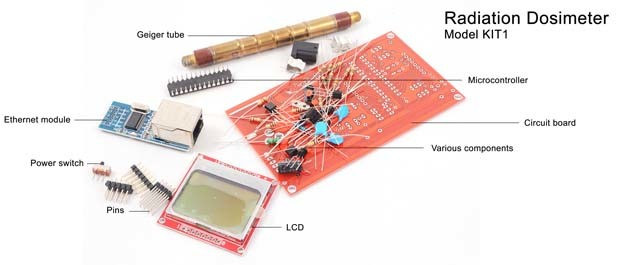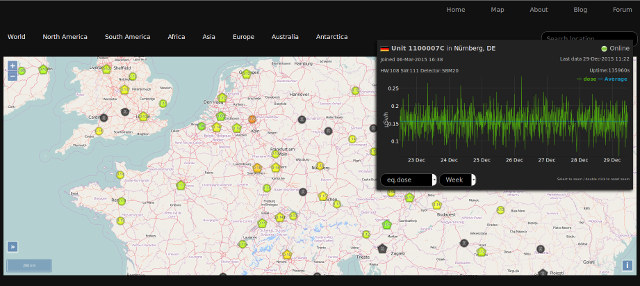Some projects such as the World Air Quality Index project are already generating a pollution world map using data from the countries’ respective “Environmental Protection Agency (EPA)”, but a Romanian startup aims to allow individuals to monitor pollution around the world with their uRAMonitor project, effectively crowd-sourcing pollution monitoring.

For this purpose, the company created environmental monitors with various features and price points, include the higher-emd Model D with the following specifications:
- Color LCD with touchscreen
- LND712 made in the USA for Alpha, Beta and Gamma Radiation
- Bosch BME680 to measure air temperature, barometric pressure, humidity and VOC (volatile organic compounds)
- Sharp photoelectric sensor to measure dust, pollen, soot, smoke and other particulate matter
- 1500mAh rechargeable battery for 8 hours of continuous use
- Wireless 802.11b/g/n connectivity
- mini USB connector for charging or data
- Internal audible alarm when pollution readings are high
There’s also model A measuring temperature and radiation, connected to the network via Ethernet, and already tested by 300 users, and a cheaper open source uRADMonitor KIT1 with a Geiger counter.

All the data will be send to a central server with measurements publicly available on uradmonitor.com, and thanks to the models A currently in the wild, there’s already some data as shown in the screenshot below. Data can also be sent to your mobile for real-time monitoring.

The device can also be used for indoor air quality, for example to remind you to ventilate your home if there’s too much dust or other pollutants.
uRADMonitor project has now launched on Indiegogo, where you can pledge $490 for the Model B, $150 for model A, and $90 or $120 for KIT1 depending on whether you’d like to solder components yourself, or prefer it assembled. Shipping is not included and adds $10 or $15 (Express), with delivery scheduled for January and February 2016 for models A and KIT1, and March 2016 for Model D. Bosch BME680 used in Model D is only scheduled for “Q1 2016”, so delays are possible and IMHO even likely.
Thanks to Jesu for the tip.

Jean-Luc started CNX Software in 2010 as a part-time endeavor, before quitting his job as a software engineering manager, and starting to write daily news, and reviews full time later in 2011.
Support CNX Software! Donate via cryptocurrencies, become a Patron on Patreon, or purchase goods on Amazon or Aliexpress




